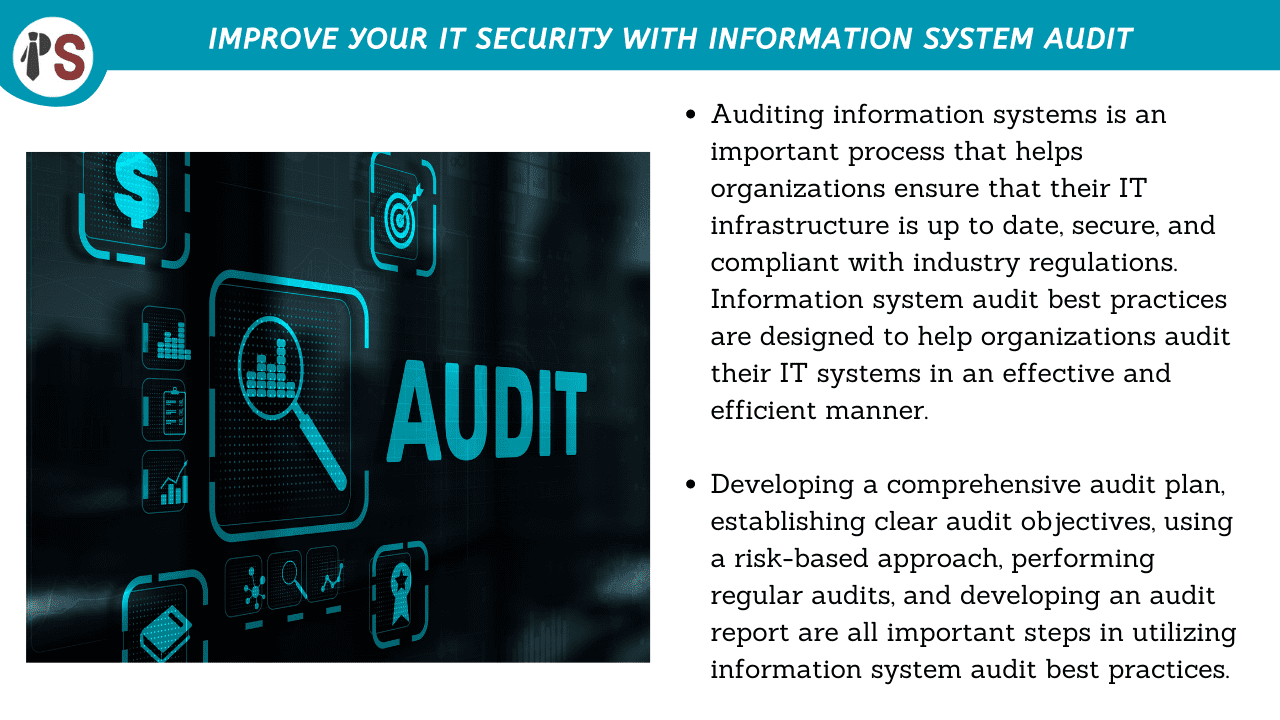
Auditing information systems is an important process that helps organizations ensure that their IT infrastructure is up to date, secure, and compliant with industry regulations. It also helps organizations identify potential areas of risk and develop strategies to mitigate them. Information system audit best practices are designed to help organizations audit their IT systems in an effective and efficient manner. In this blog, we will discuss the importance of information system audit best practices and how organizations can use them to improve their IT security.
Information system audit is a process of assessing the security, accuracy, and reliability of an organization’s information systems. It is conducted to determine if the systems are compliant with industry regulations and standards, as well as to identify potential areas of risk. Information system audit is an important part of an organization’s overall risk management strategy and can help organizations address cybersecurity threats and vulnerabilities.
Information system audit is important because it helps organizations ensure that their IT systems are secure and compliant with industry regulations. Additionally, it helps organizations identify potential areas of risk and develop strategies to mitigate them. By conducting regular information system audits, organizations can reduce the risk of cyber attacks, data breaches, and other security threats.
Develop a comprehensive audit plan: Organizations should develop a comprehensive audit plan that outlines the objectives, scope, and timeline for the audit. The audit plan should also include the roles and responsibilities of stakeholders involved in the audit.
Establish clear audit objectives: Organizations should establish clear objectives for the audit that are aligned with their overall IT security goals. These objectives should include identifying risks, vulnerabilities, and areas of non-compliance.
Use a risk-based approach: Organizations should use a risk-based approach when conducting an information system audit. This involves assessing the potential risks associated with the IT system and then developing strategies to mitigate them.
Perform regular audits: Organizations should perform regular information system audits to ensure that their IT systems remain secure and compliant. Regular audits can help organizations identify potential areas of risk and develop strategies to mitigate them.
Develop an audit report: Organizations should develop an audit report that outlines the findings from the audit. The report should include a summary of the audit objectives, results, and recommendations for improvement.
Information system audit best practices are important for organizations to ensure that their IT systems are secure and compliant with industry regulations. By following these best practices, organizations can reduce the risk of cybersecurity threats and other security issues. Additionally, they can improve their overall IT security posture and ensure that their IT systems remain up to date, secure, and compliant.
At Professional Saathi, we offer a range of business consultancy services that help businesses improve their performance, achieve growth, and overcome challenges.
Copyright 2025 © Created By KTPG PROFESSIONAL SAATHI CORPORATE CONSULTANT PRIVATE LIMITED, All Rights Reserved.
Leave Your Comment